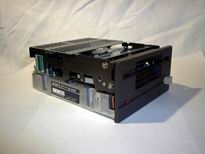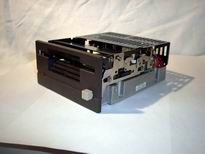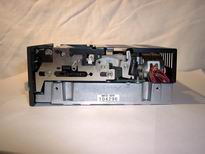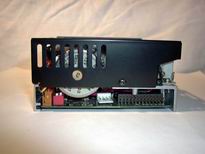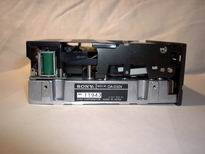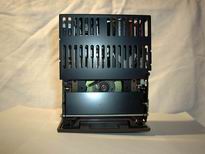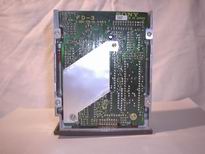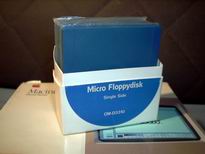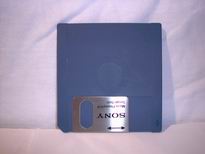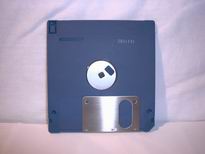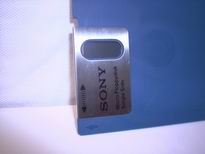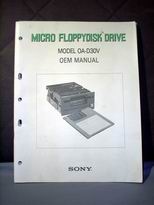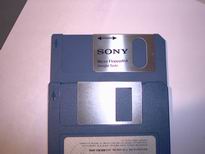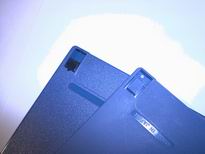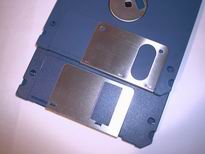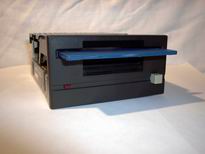
Apple
Museum For-A-Day
![]()
![]()
SONY Micro Floppydisk Drive - Model OA-D30V
October 27, 2002
Copyright 1997-2010 Pearl City Networks. All Rights Reserved. This article
is not to be re-published without permission of the author.
Errata available at the bottom of this article...
The SONY Micro Floppypdisk Drive is very important to the history of Apple Computer. SONY Corporation invented the "micro" floppy disk drive, releasing its first commercially available model called the OA-D30V in 1981. The model OA-D30V you see in these photos is therefore considered the world's first flexible 400KB micro floppy disk drive to hit the market. In 1984, Apple took a more modernized model, the model OA-D34V (and later the OA-D34V-02) of the SONY mechanism and implemented it into the Apple Macintosh 128K. And, around the same time, Apple included the same part into the Apple Lisa 2 and the Apple Lisa 1 upgrade kit.
A number of things changed within the three years between the release of the OA-D30V and the OA-D34V. The OA-D30V is compatible with existing floppy disk controllers of its time (PCs used a 360KB 5.25-inch disk controller). Therefore, the disk drive required a power source, which at the time was not provided by the ribbon cable. It is the same power connector you see in today's PC 3.5-inch disk drives. The model OA-D34V Apple used later on provided power through the ribbon cable.
If you're a Macintosh fan, you should be familiar with the SONY auto-inject (MP-F51W and MP-F75W) models and manual-inject (MPF52A and MF355F) disk drives. Both models allow the diskette to be ejected automatically. The OA-D30V did not allow the diskette to eject automatically. Instead, you had to press the eject button in order to take the diskette out. Therefore, the OA-D30V was both a "manual-eject" and "manual-inject" disk drive.
The Micro Floppydisk, model OM-D30V, was also invented by SONY Corporation. Though it's basically a low-density, single-sided diskette, the disk guard (other people call it a "shutter") was somewhat of a different design. The disk guard had more area for movement than today's disk guards, which is able to move back-and-forth within a 33mm area (today's disk guards move at approx. 23mm).
Also, today's 3.5-inch disk drives automatically move the disk guard, exposing the magnetic surface. It's able to do this by placing an arm into a notch, then moving the arm, opening the disk so it can be read or written. The OM-D30V required that you manually slide the disk guard to the open position, then insert into the disk drive.
And, the disk write-protect is quite primitive on the OM-D30V. The diskette was shipped with the disk in a writable state. To write-protect the disk, you would have to break the break off the disk protect tab. That means, if you were to write on this diskette again, you had to find a way to re-plug the hole. Today's 3.5-inch diskettes has a disk protect tab that can click in two positions: write and write-protect. And, the write protect hole only showed on the bottom and not the top of the OM-D30V, unlike today's diskettes.
|
10/29/2002 - First off, the OM-D30V diskette's disk protect tab, when removed, could actually be re-attached. Also, even though the diskette is a 400KB diskette, the format capacity is 360KB. When the drive was first released in 1981, it was reportedly used in the Hewlett-Packard 150. Later models of the 150 had double-sided disk drives. Thanks to Michael J. Mahon, Dosius, Greg Buchner for these corrected pieces of information. |
|
|
